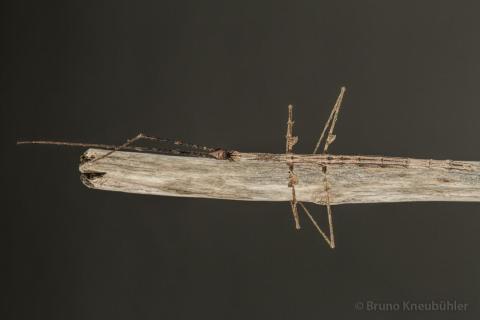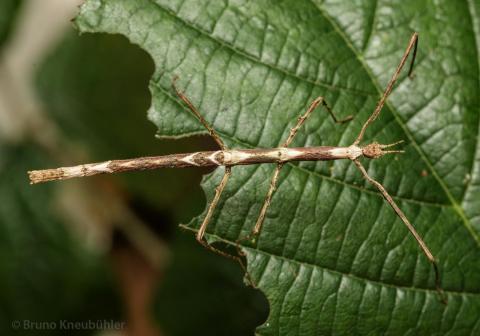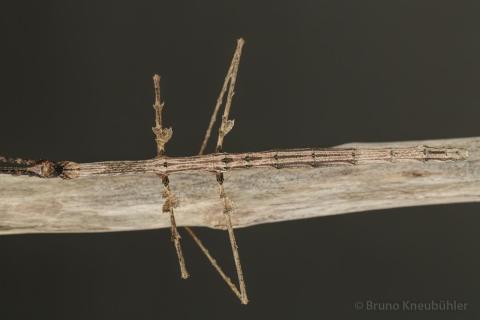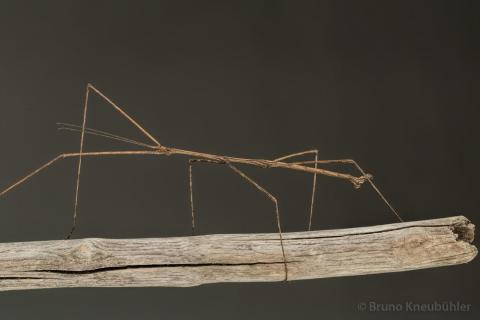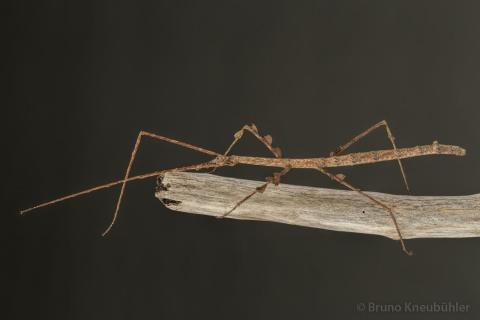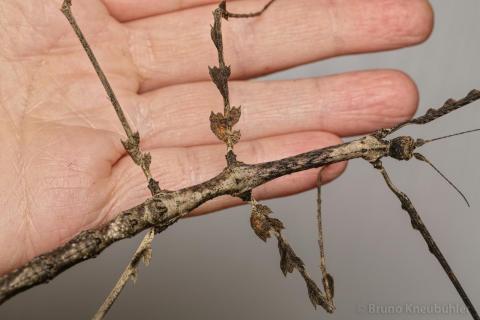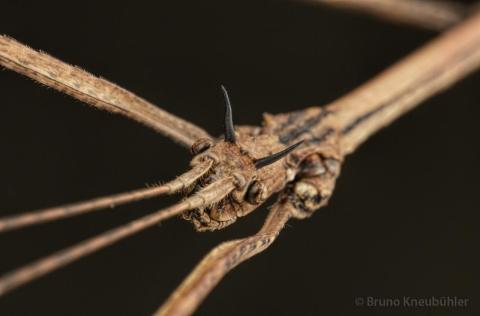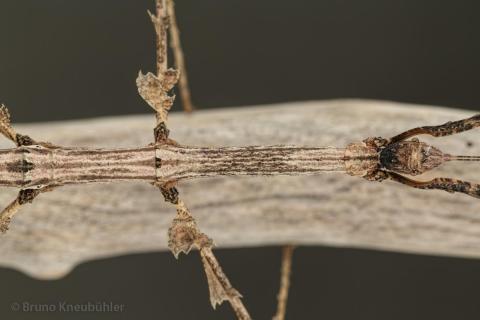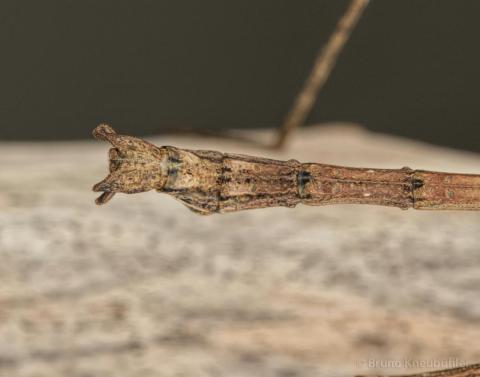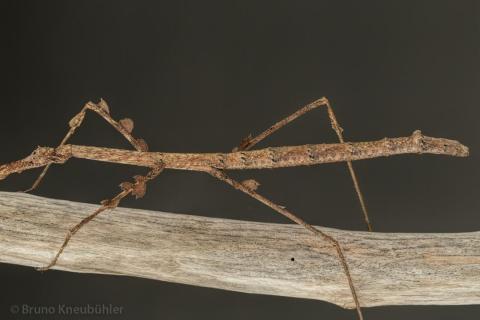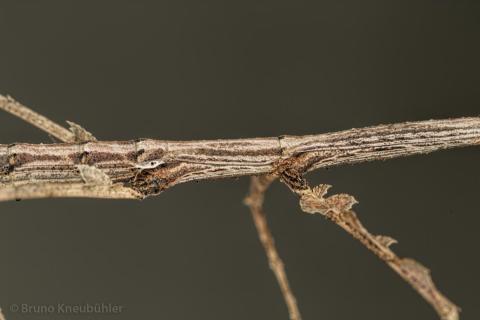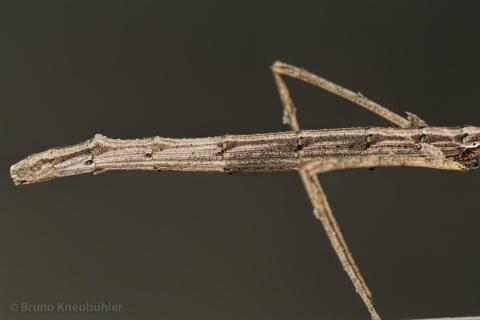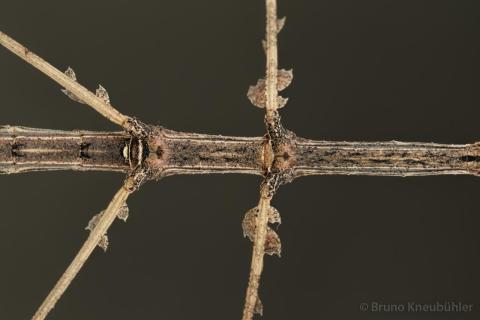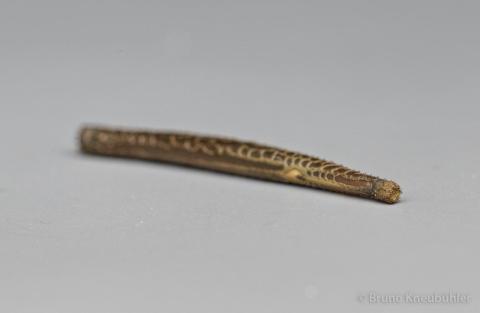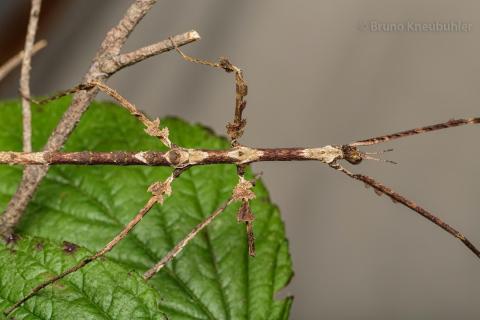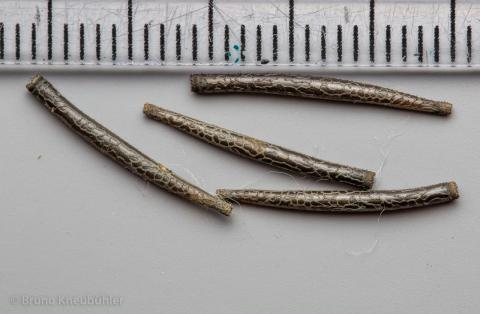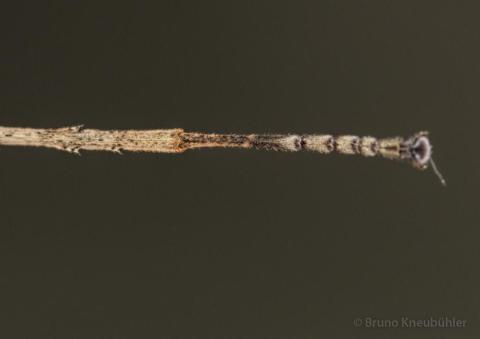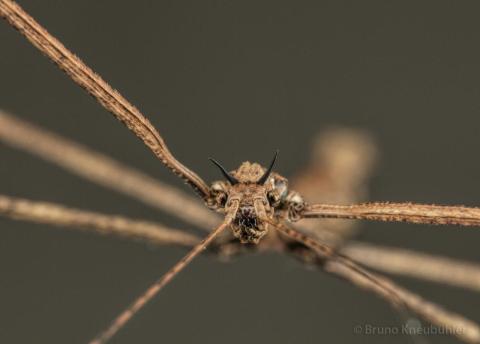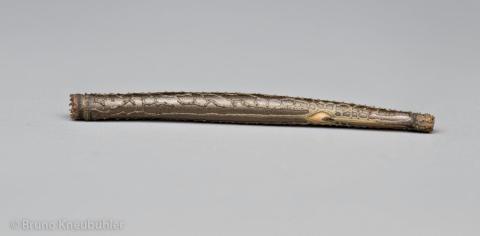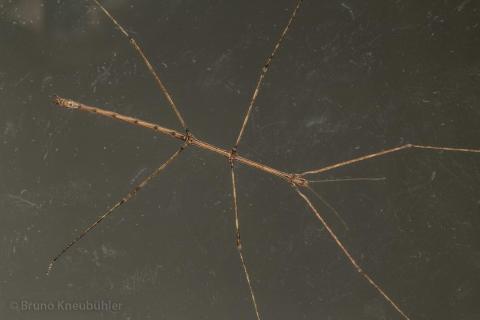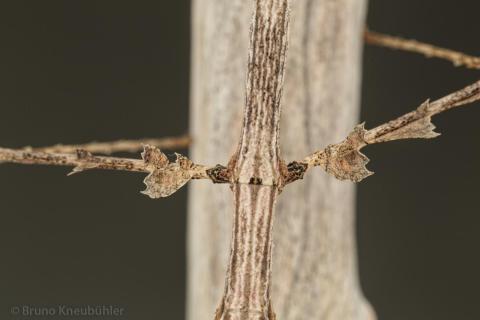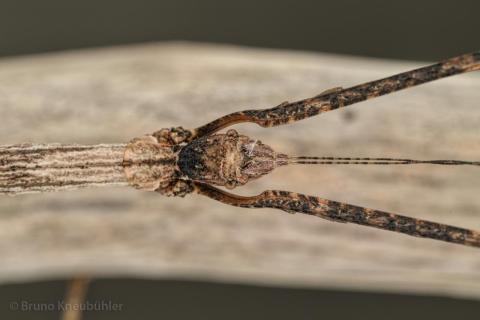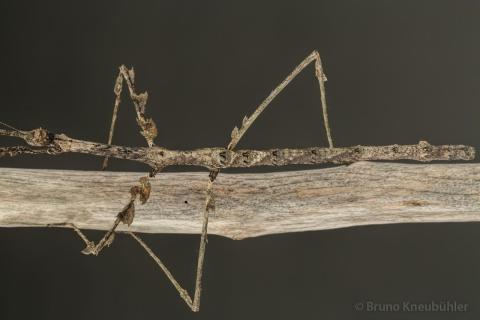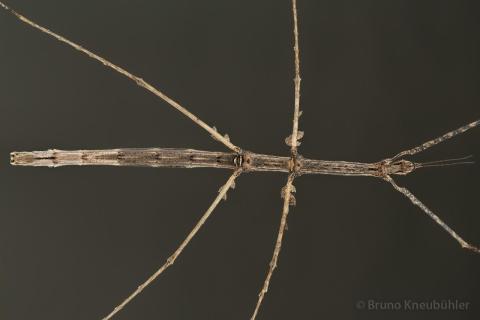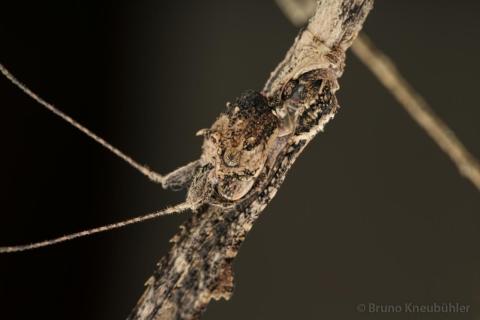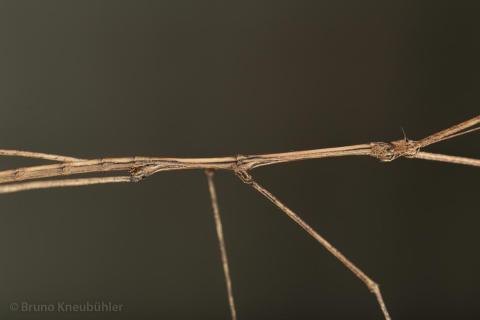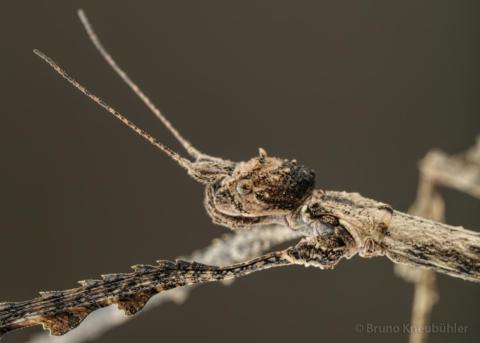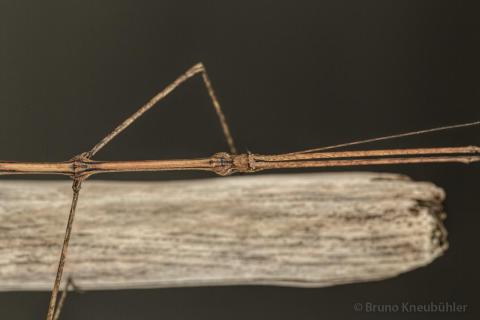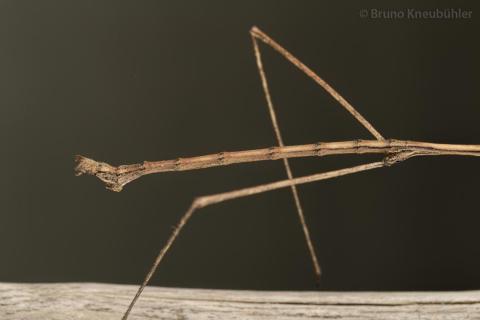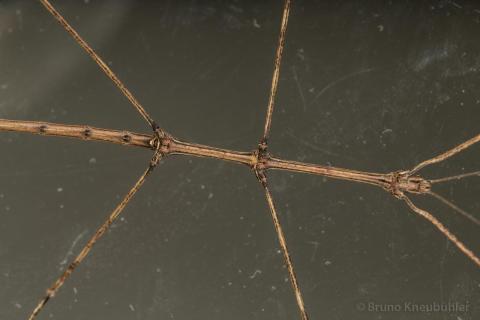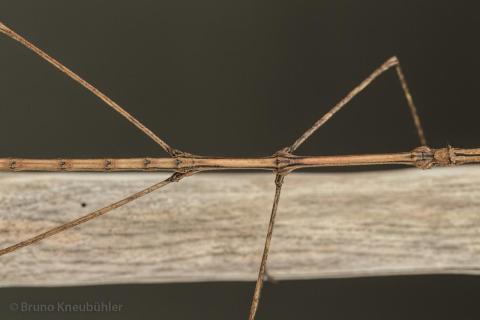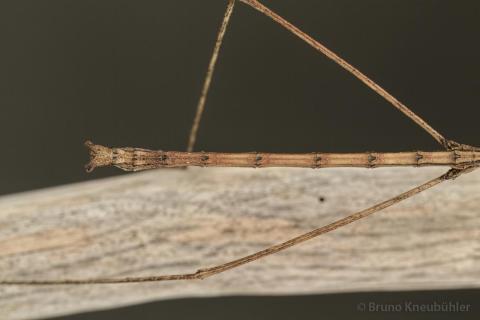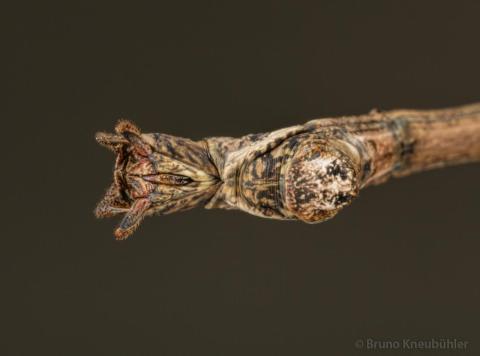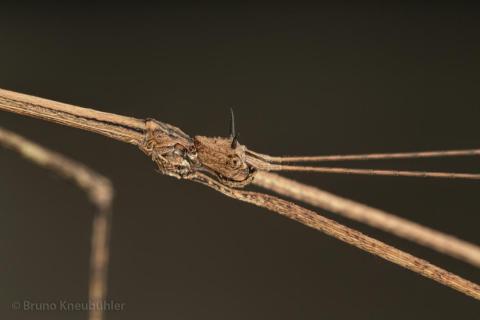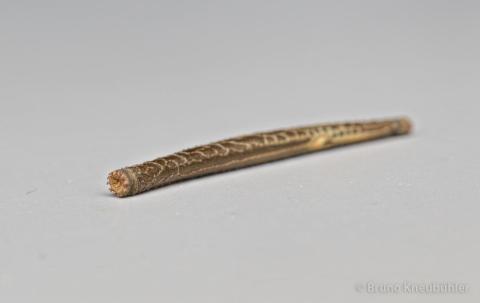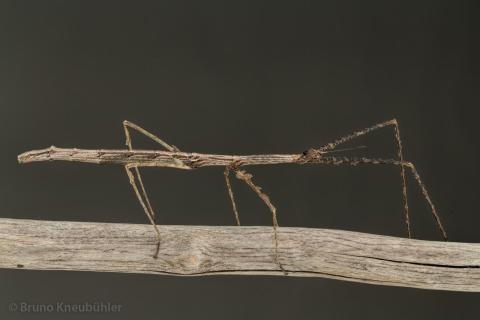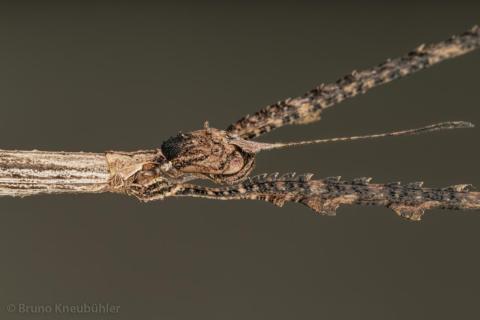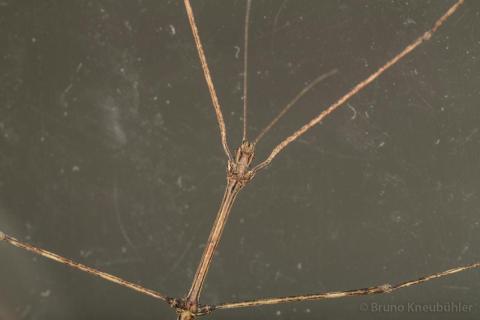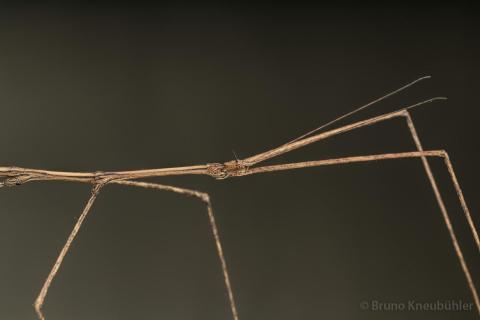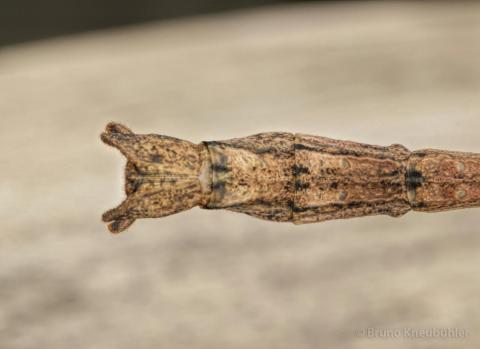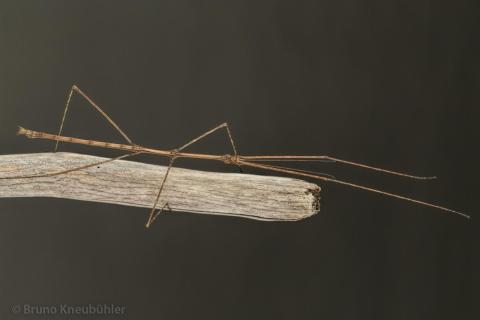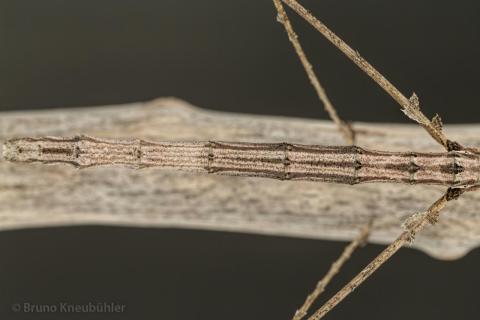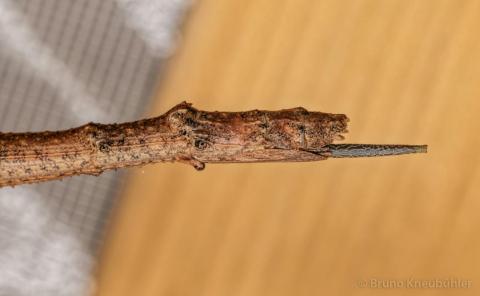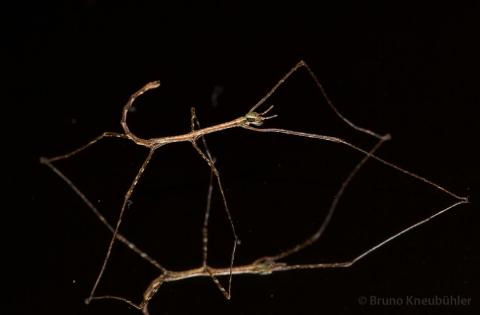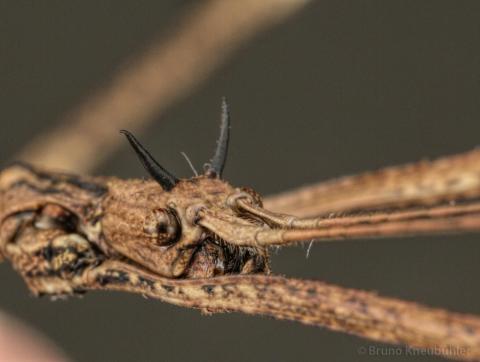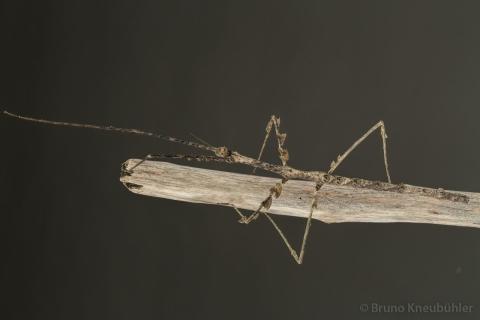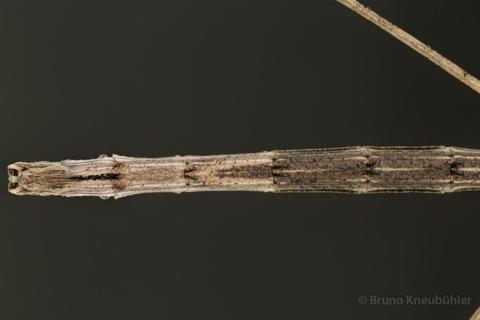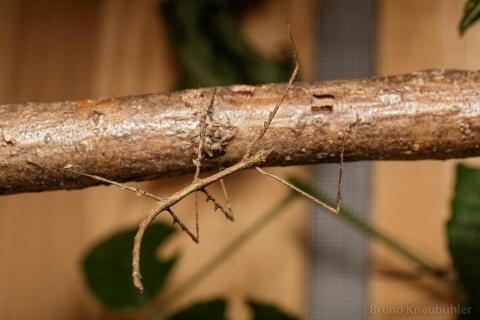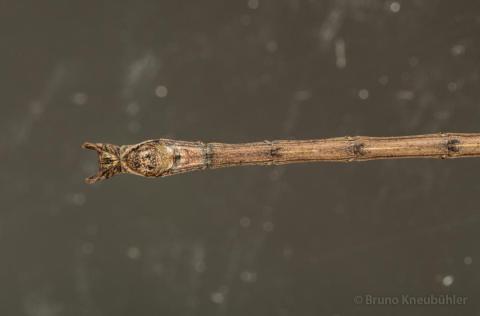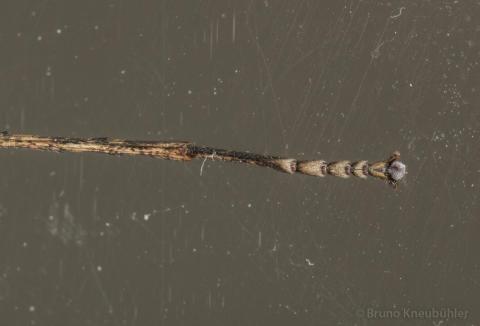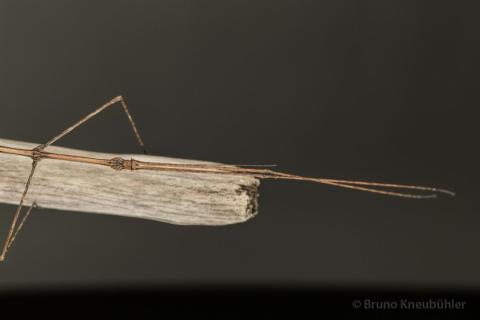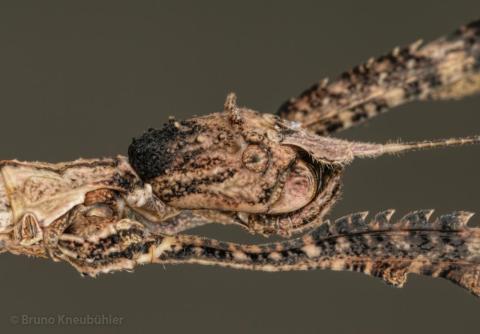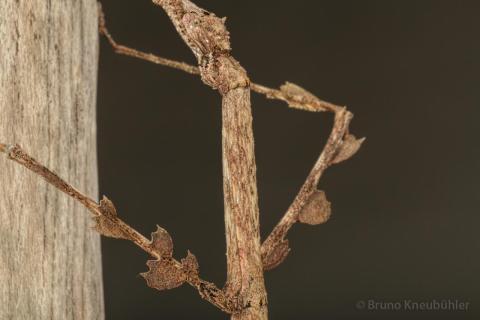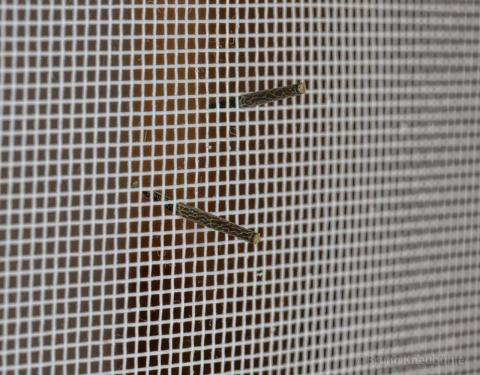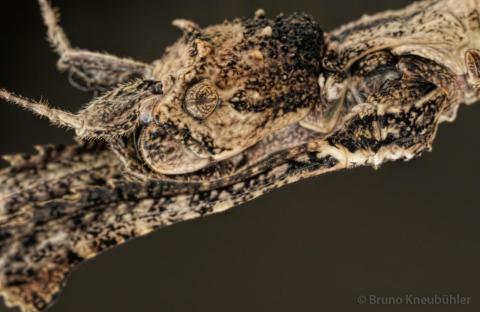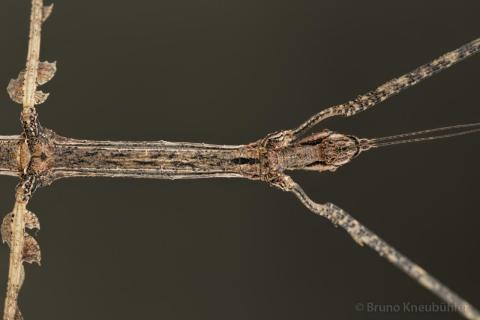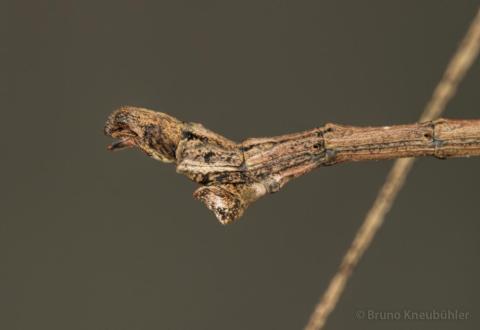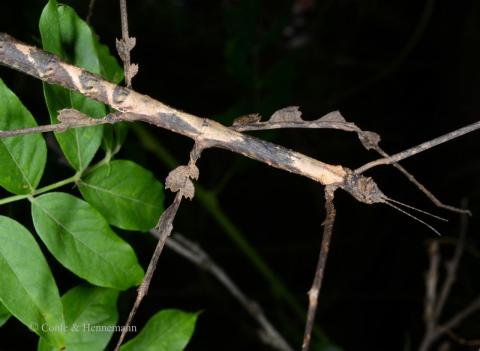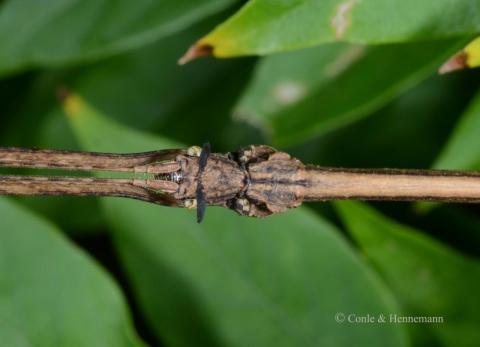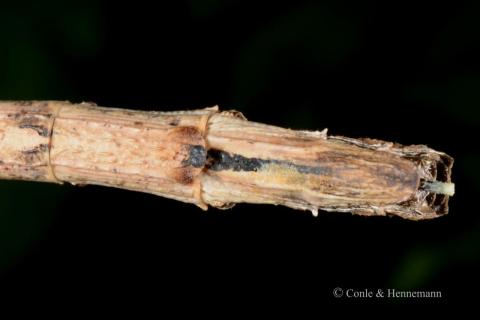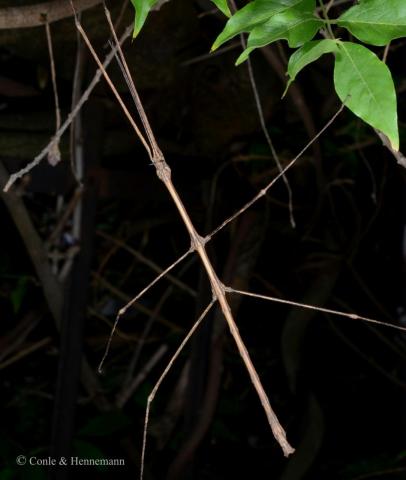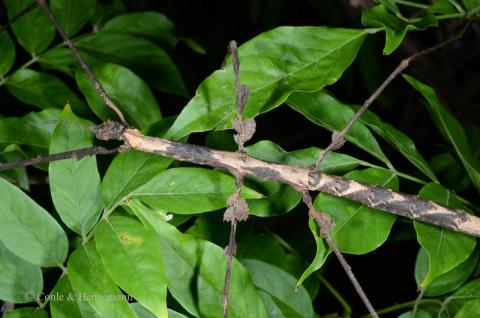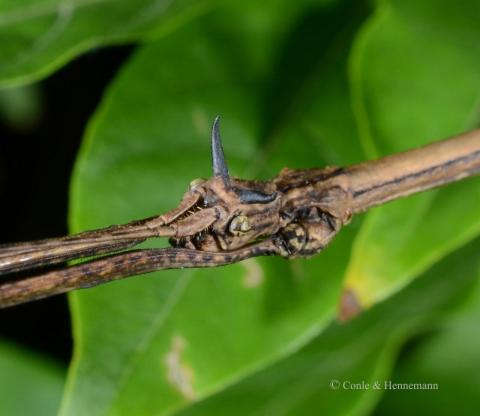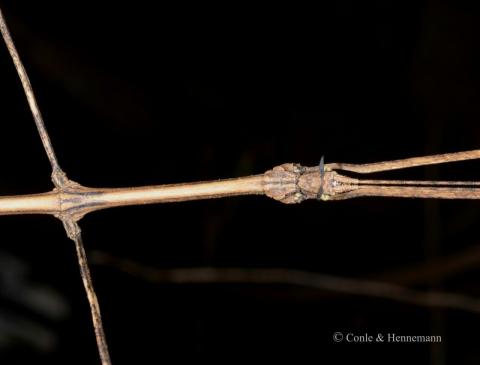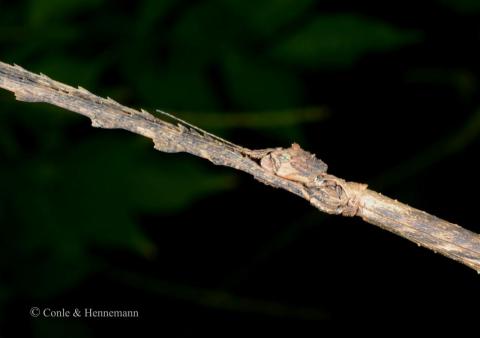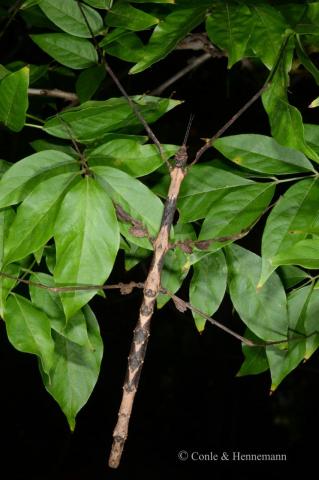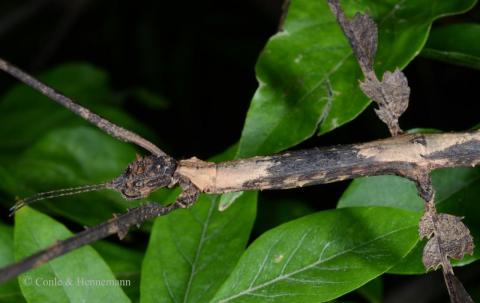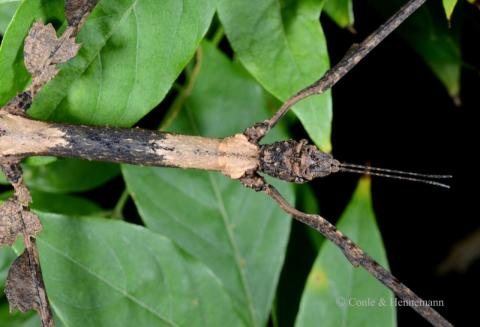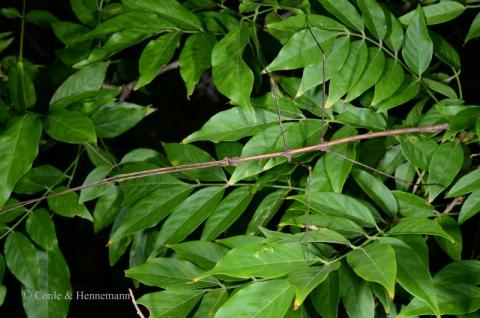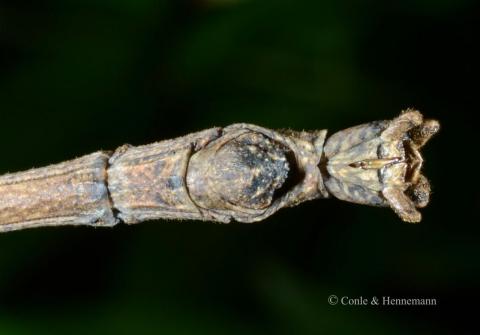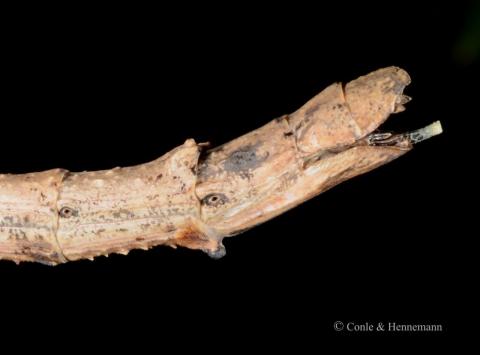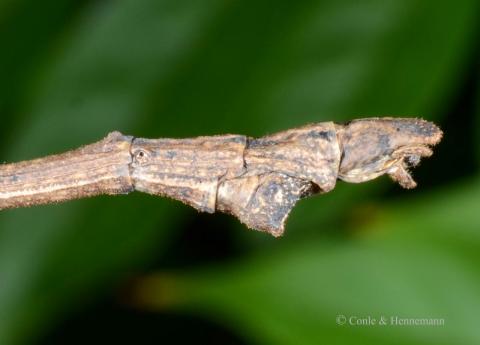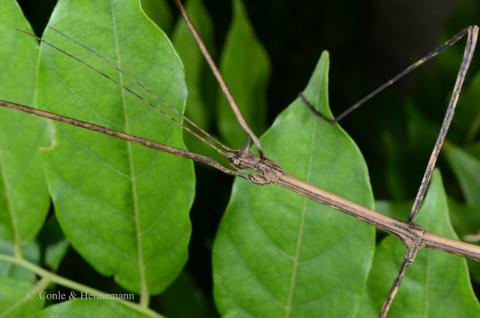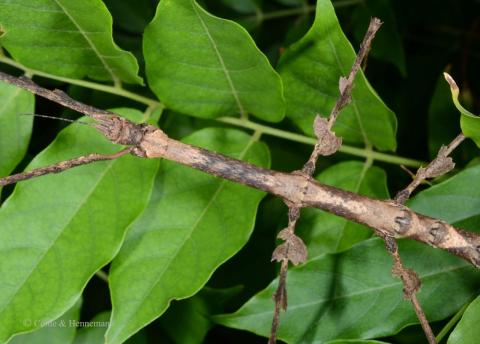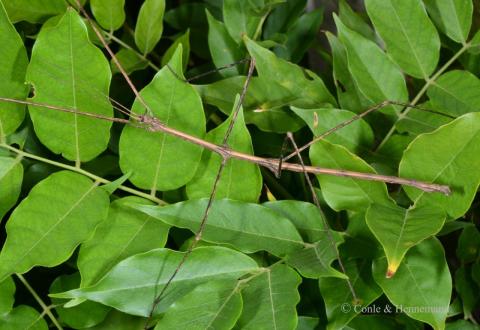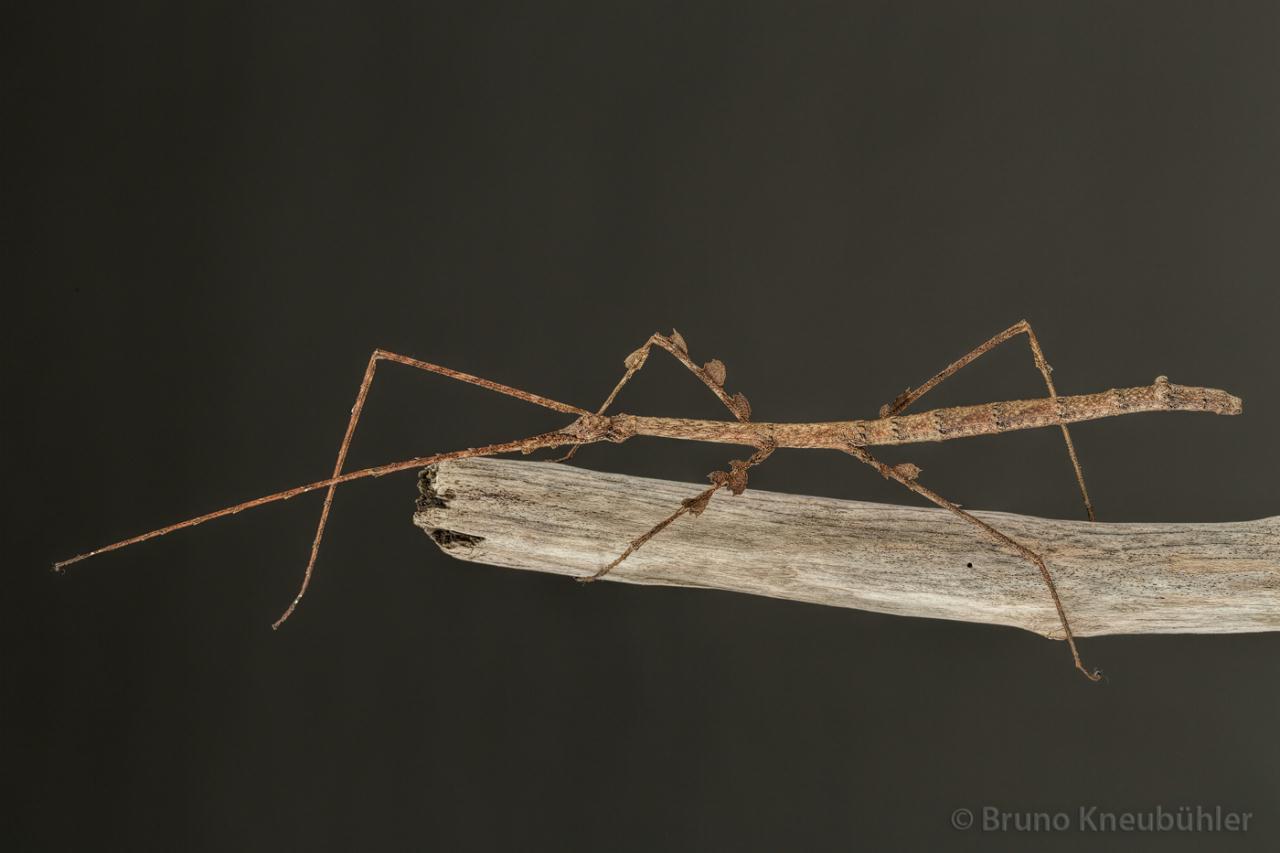
Genus
Stock
CLP
623
PSG
393
Culture status
In culture
Foodplants
Bramble (Rubus spp.)
Beech (Fagus sylvatica)
Eucalyptus spp.
Breeding notes
(by Bruno Kneubühler)
General Notes
- this culture has initially been called Medaurini sp. " Tay Yen Tu"
- described by Joachim Bresseel (Belgium) and Jérome Constant (Belgium) in 2017
- further taxonomical informations → Phasmida Species Files
_________________
Culture History
- 2014 - first successful culture by Bruno Kneubuehler
- 2014 – distributed to other breeders as Medaurini sp. „Tay Yen Tu“
_________________
Origin
- Tay Yen Tu, Vietnam
_________________
Females
- long-legged phasmids
- body length about 12 – 15 cm
- coloration very different amonst females
- different, also very contrasty brown shades
- already young female nymphs are very differently colored
- big lobes on the mid- and hindleggs
- small spines on the head
- short antennae
- subgenital plate shorten than the abdominal ending
_________________
Males
- slender phasmids
- body length about 10 – 11 cm
- coloration is consistent amongst males
- brown
- 2 long, black spines on the head
- short antennae
_________________
Nymphs
- lenght about 25 mm (L1)
- very short antennae
- by L4 it is quite easy to draw a distinction between ♀♂ (by the naked eye)
_________________
Eggs
- about 16 mm long and only about 1.5 mm thin
- the actual egg (without the operculum) is about 15 mm long
- thus this could be one of the longest phasmid eggs discovered so far
- dark brown, almost black
- they look like grains of wild, black rice
- surface with net-like structures
- slightly glossy
- operculum (egg lid) has a fringe-like rim
- micropylar plate is oddly spear-shaped
_________________
Food Plants
- it is very much recommendede to cut away the edges of the leaves for nymphs in L1
- regularly change the plants and the water in which they stand
- bramble (Rubus spp.)
is very well accepted by nymphs and adults - beech (Fagus sylvatica)
is very well accepted by adults (not tested with nymphs) - Eucalyptus
well accepted by nymphs (info by Mohammed Buhamad , Kuwait)
_________________
Behaviour
- nymphs as well as adult are very passive during the day and out and about feeding at night
- nymphs are also passive when they are being touched
- yet adults (especially adult males) also try crawl to safety when they feel threatened
- autotomy (dropping their own legs) is no problem with this species
- matings occur often during the night, males do not stay with the same female for a long time
- a defensive spray has not been observed
- before an eggs is being laid, it's tip is already visible at the abdominal ending
- many eggs will lay on the cage floor
- but some eggs are also stuck into fly-screen or cotton wool. With their fringe-rimmed lid, the eggs stick very well to cotton wool. Maybe this is an indication that eggs of this species are stuck into moss in nature, where they are better protected?
_________________
Developement
- incubation time (HH-incubation on slightly damp sand at 20 - 23 °C) is about 8 weeks only
- please note, that for phasmids it is not uncommon that some nymphs hatch a few or many months after the first nymphs hatched
- spread some moss over the eggs - this will make it much easier for the nymphs to hatch unscathed and it also reduces mould growth to some extend
- males will be adult after about 5 months (at 20 – 23°C), females after about 6 months
- females start laying eggs after about 3 – 4 weeks
- about 8 – 12 eggs per female and week
- adults can live for several months
_________________
Breeding Notes
- my general notes on how to breed phasmids are an integral part of this care sheet …
- it is recommend to keep this species in a seperate cage. The culture is much more likely to be successful than in an multi-species cage which are all too often badly crowed
- degree of difficulty = 1 (1= very easy / 5 = very difficult)
- as the freshly hatched nymphs are already quite big, therefore the incubation container must be big enough too
- keep nymphs seperate from the adults. This makes it much easier to monitor their developement and they are protected from being disturbed or even harmed by the much bigger adults (like during their moults)
- keep the nymphs in a cage with good ventilation, but take care that the humidity does not drop too low
- a constantly wet paper towel on the floor of the cage helps raising humidity
- a humidity level of about 60+ % rH (for adults) and 75+ % rH (for nymphs) seems to be fine
- nymphs can be kept in a Faunabox (or similar cages like Faunarium)
- move nymphs to a bigger cage as they grow bigger
- a cage of at least 30 x 30 x 60 cm height should be provided for 3 – 4 adult couples
- at least 2 (-3) cages are needed to breed this species – one cage for the small nymph, maybe another one for the older nymphs and one cage for the adults
- I have never sprayed nymphs, adults or their cage with water
- make sure that nymphs, which are about to undergo their adult moult, do not find places in the cage which would not offer them enough space beneath to moult successfully
